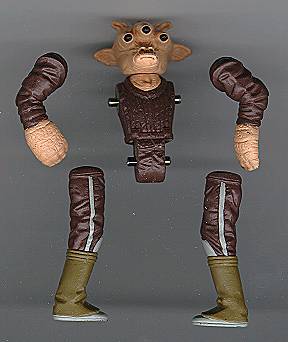

Hardcopy or Hard Copy
A "hardcopy" is just what it
says - it's a hard copy of a figure, but not of the standard figure. It's actually a copy of the original sculpting and it is the product
of a silicone mold. They're called hardcopies because they are made of a polyurethane that is harder and usually weighs quite a bit more
than the normal plastic used on production figures. The urethane is generally comprised of three parts: a catalyst, a hardener, and a
pigment. Any color can be added, but only after the catalyst and hardener have been mixed together will the urethane solidify.
All hardcopies are hand cast, hand painted, and hand assembled by the people involved in the design process. Each part must be cleaned
up and sanded at the joints so that they can be prepped for assembly. Holes must be drilled in each part because the limbs and head are
held on with metal pins. Because dowel pins are used to hold the limbs on, the figure can easily be taken apart. Hardcopies do not have
holes in the feet or copyright markings on the legs as these additions come during the steel mold making process. Hardcopies are used as
approval samples and, more importantly, the unpainted ones serve as tooling aids for creating the steel molds. Painted hard copies serve
as paint masters so the production folks will know what part gets painted a certain color, or what plastic base color to use. Because
there is no shrinkage involved in casting a hardcopy it is dimensionally identical to the original wax sculpting; however, a slight bit
of detail may be lost between it and the original because of the copying process.
Greedo Painted Hardcopy
Description: Chris Georgoulias
Nikto Unpainted Hardcopy
Bib Fortuna Painted Hardcopy